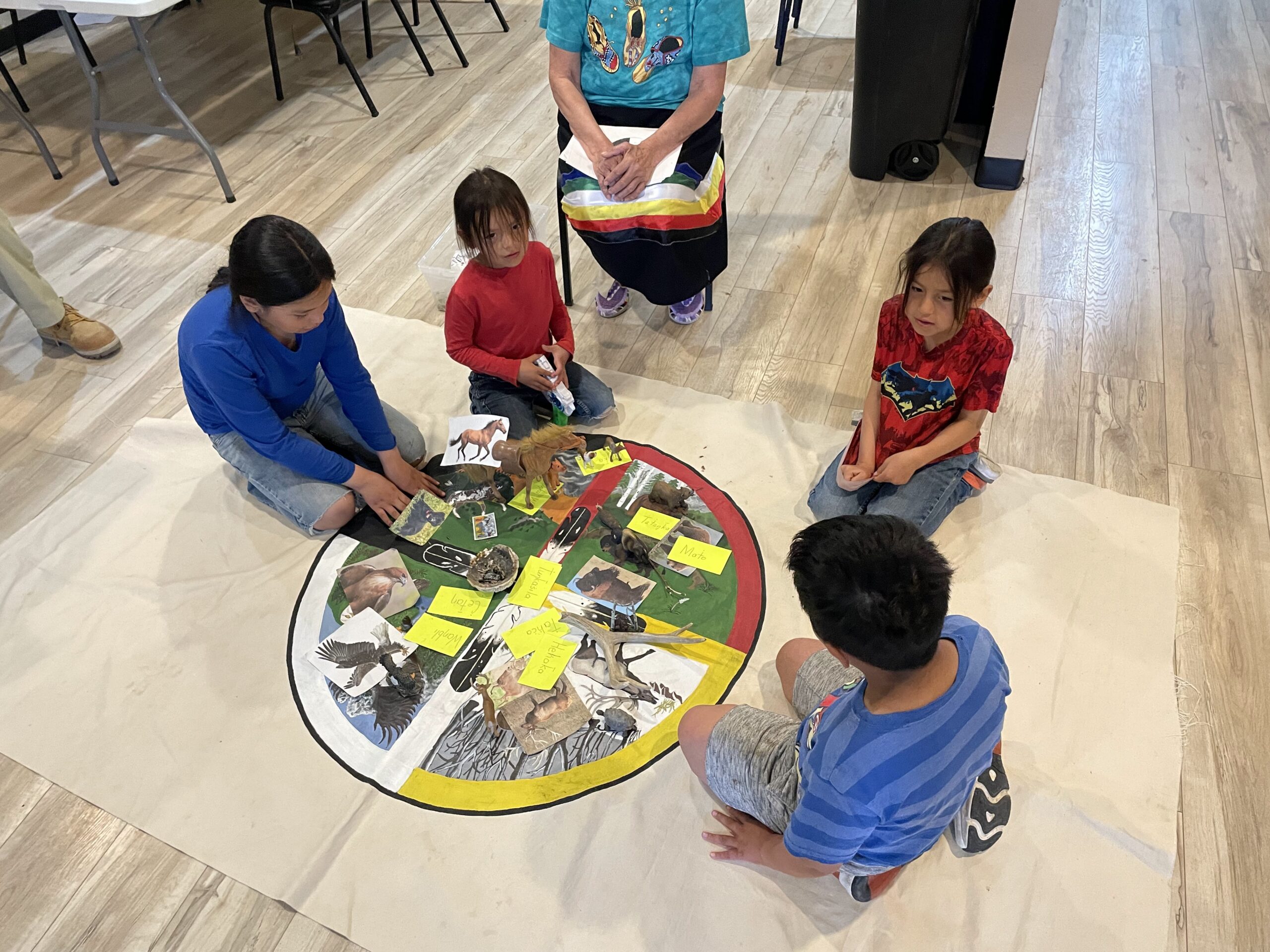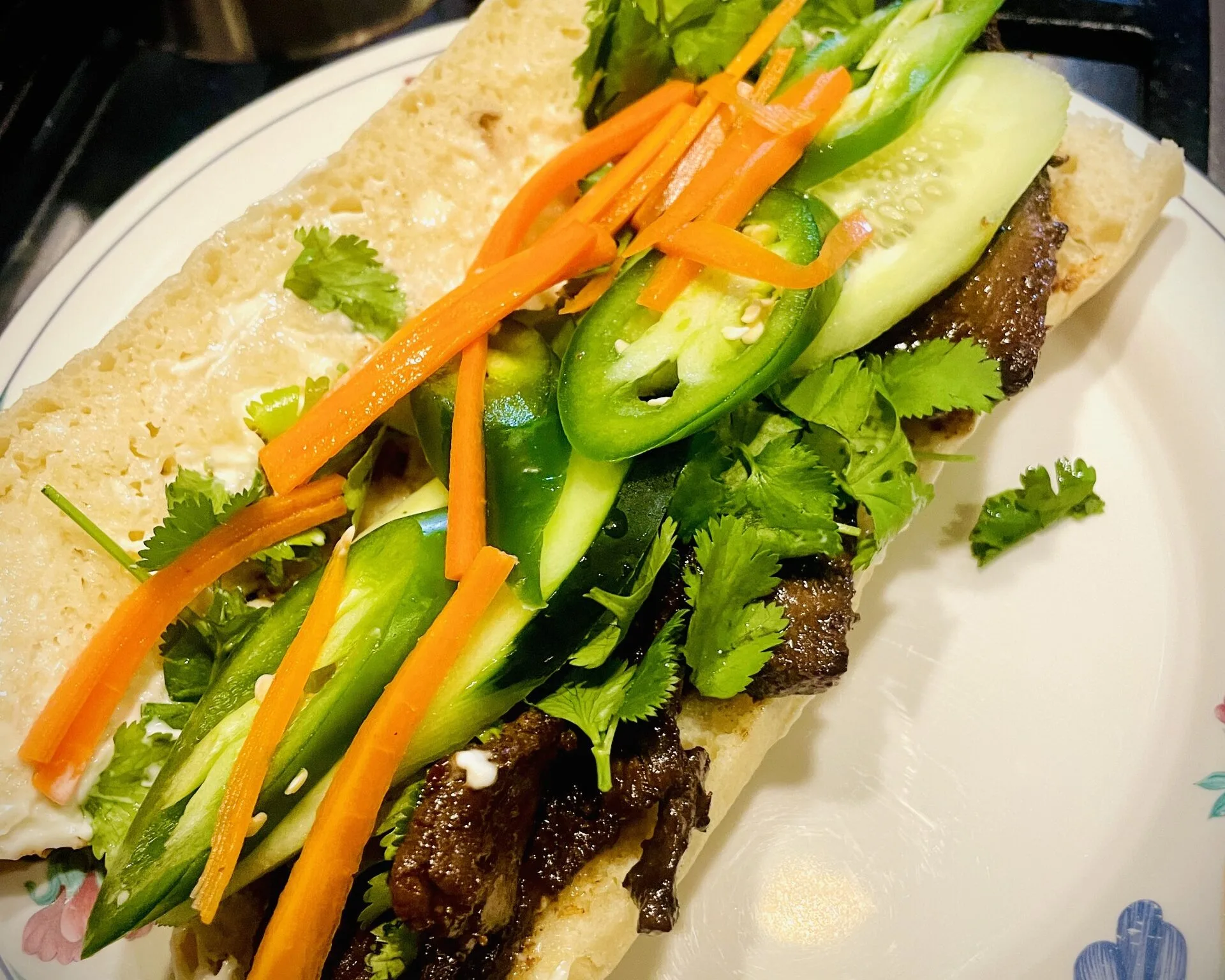In celebration of Native American Heritage Month, Newman’s Own Foundation is sharing recipes and stories from some of our Indigenous Grantee Partners! As Lakota, Siċaŋġu Co believes its people are all related and have a duty to create a better world for future generations. The Siċaŋġu Health Initiative exists to help Siċaŋġu families on their return to their natural healthiness and wellbeing (Wicozani). Siċaŋġu Co builds socio-emotional well-being in young people through in-school programming and camps, supports family health through coaching and food and wellness classes, and engages communities through health- and relationship-building events.
Food Sovereignty Director Matte Wilson (he/him/wicasa) shared a recipe for Bison Bahn Mi, an example of “Modern Lakota cuisine.” Matte says using ingredients like bison, sunflower oil, and maple bring a subtle indigenous element, and connects the dish to his connection to the land.
“The Bison Banh Mi I’ve created reflects my culinary philosophy and my commitment to food sovereignty work,” Matte shared. “For me, cooking with Indigenous foods has been about merging elements of my Lakota culture with modern influences. Growing up on a rural South Dakota reservation, access to global cuisines was and is still very limited, so I first learned to cook Asian dishes myself thanks to YouTube and trial and error. This hands-on approach shaped my relationship with food and mirrors how I approach “Modern Lakota cuisine”: with curiosity, adaptability, and respect.”
He continues, “Historically, Lakota people were foragers and hunters, not farmers, yet we have adopted farming in a way that honors both tradition and evolution. The vegetables I used when making this recipe were harvested from our farm, Keya Wakpala Gardens. The baguette used was baked from scratch by a friend. This dish, like my work with the Food Sovereignty, represents that blend of the past and the present, and spirit resilience and adaptability in our connection to food and the land.”
BISON BAHN MI
Recipe courtesy of Matte Wilson
Ingredients
Bison Char Siu
- 1-2 pounds bison roast, sliced very thin
- ¼ cup brown sugar
- 2 teaspoons salt
- ½ teaspoon five-spice powder
- ¼ teaspoon white pepper
- ½ teaspoon sesame oil
- 1 Tablespoon soy sauce
- ½ cup hoisin sauce:
- 3 cloves garlic, finely minced
- 2 Tablespoons maple syrup
- 1 Tablespoon hot water
- 2 Tablespoon sunflower oil (or another high smoke point, neutral oil)
Pickled Vegetables
- 1 cup rice vinegar
- ½ cup white sugar
- 1 cup water
- 1 cup carrots cut into matchsticks
- 1 cup radish cut into matchsticks
Assembly
- 4 French baguettes, sliced with a hinge intact
- ~8 Tablespoons mayonnaise (1-2 tablespoons per baguette)
- 1 medium cucumber, sliced lengthwise into thin strips
- 1 bunch fresh cilantro, stems discarded
- 1-2 jalapeño peppers, sliced diagonally, ¼” thick
Directions
Prepare the Bison Char Siu
- In a large mixing bowl, combine garlic, brown sugar, soy sauce, salt, five-spice powder, white pepper, sesame oil, maple syrup, and hot water.
- Add the thinly sliced bison, ensuring each piece is well coated. Cover and refrigerate for at least 4 hours, or up to 12 hours for deeper flavor.
Make the Pickled Vegetables
- In a small pot over medium-high heat, combine rice vinegar, water, and sugar. Stir frequently until the sugar dissolves and the mixture starts to steam, about 2 minutes.
- Pour the hot pickling liquid over the carrots and radish in a bowl. Cover and let sit for at least 1 hour. Tip: These pickles can be prepared up to 2 weeks ahead and stored in the refrigerator, fully submerged in brine.
Cook the Bison
- Heat a wok or large frying pan over medium-high heat. Add the sunflower oil, followed by the marinated bison. Cook for 4-5 minutes until the bison is browned.
Assemble the Banh Mi
- Spread 1-2 tablespoons of mayo on the bottom of each baguette. Layer with bison, pickled vegetables, cucumber strips, jalapeño slices, and fresh cilantro leaves.
- Close the baguette, serve, and enjoy your Bison Banh Mi!
Interested to read more about Matte and Siċaŋġu Co? Check out this National Geographic profile featuring a recipe for blue corn sugar cookies!


